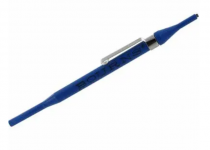Yes, I know this. I was just expressing a wish rather than asking you to implement this.@RafaPolit, I don't work for the Store and I am not authorized to speak for the Store either ...
But sure, I'll shoot an email to Jason, but so close to the lottery, he is probably swarmed up with suggestions and ideas! 😱
Thanks again,
Rafa.
I have really wanted a pcb fab house here, in the states, that made sense for my small projects.
Osh Park, great for small boards. As small as 1/2 sq in, and free shipping.
OSH Park ~
Last edited:
Beautiful! Thank you! I think there also were more than one HMS Dreadnoughts with wooden masts and linen sails.
Yep, it is a Royal Navy vessel name that has a lot of history.
HMS Dreadnought of 1875

HMS Dreadnought of 1960

There have been 9 HMS Dreadnoughts to date, the first was in 1573, and the newest is a new ballisitic missile boat (submarines are boats, not ships).
A Brief History of All the Warships Called "Dreadnought"
HMS Bulwark is also a name with history, here's the current HMS Bulwark

and HMS Bulwark of 1899

HMS Dreadnought of 1875

HMS Dreadnought of 1960

There have been 9 HMS Dreadnoughts to date, the first was in 1573, and the newest is a new ballisitic missile boat (submarines are boats, not ships).
A Brief History of All the Warships Called "Dreadnought"
HMS Bulwark is also a name with history, here's the current HMS Bulwark

and HMS Bulwark of 1899

Last edited:
The First Watt M2x had it three years ago, here on this Forum and also in the diyAudio Store.
I know, after the success of building the ACA, I considered it along with the Alpeh J and F6 for my next amp build.
To my knowledge it is the first SE amp to have it and I hope that later design will also have that feature.
Last edited:
M2x is a push pull amplifier. Nchannel source follower pulling the output up and Pchannel source follower pushing the output down.
M2x is a push pull amplifier. Nchannel source follower pulling the output up and Pchannel source follower pushing the output down.
Yeah very different than this Sony VFET SE. Did you have an idea of the influence of the various option on the global harmonic profile of the amp ?
Appropriately called distortion when it sounds bad, but harmonic when good. 😀''distorsion profile''
Setting the BOOST trimmer pot on Marauder and Dreadnought
Builders of Marauder and Dreadnought: you'll need to adjust trimmer potentiometer R25 on sheet JBOOST1 / JBOOST1D. I strongly recommend you use an oscilloscope and not a multimeter to perform the setting. You'll be measuring the frequency of a very high voltage AC swing. The AC voltage is too big for lots of meters' "frequency counter" mode, and the frequency is also too high. Please get a correct result on the first try, without damaging your test gear: use a scope.
Set the scope vertical display to 10 volts per division and set the horizontal sweep rate to 20 microseconds per division. Give the trimpot three or four full ANTI CLOCKWISE rotations to start the measurement procedure at a nice low frequency.
Probe the output pin (pin #7) of the LM311 chip. It will be a square wave whose amplitude is 32 to 36 volts. Dial the trimpot R25 to adjust the frequency of this square wave. Your goal is a frequency of 50 kilohertz.
When you get very close to 50 kHz, change the horizontal sweep rate to 5 microseconds per division. You want the square wave PERIOD to be exactly 4 horizontal divisions. Math: 4 x 5us = 20us = (1 / 50000). If your scope happens to be a digital model with frequency measurement capability: use that too.
I like to use the Bourns H-90 insulated screwdriver (mouser.com part number 652-H-90) to make these kinds of adjustments, after removing and discarding the metal pocket clip. Because it's insulated, nothing bad happens when I accidentally drop it onto a live circuit board.
Nobody will laugh at you if you decide to wear insulated gloves during the measurement. I've got boxes and boxes of disposable nitrile gloves and latex gloves thanks to the current worldwide medical situation, and I'll bet many DIYers do too.
_
Builders of Marauder and Dreadnought: you'll need to adjust trimmer potentiometer R25 on sheet JBOOST1 / JBOOST1D. I strongly recommend you use an oscilloscope and not a multimeter to perform the setting. You'll be measuring the frequency of a very high voltage AC swing. The AC voltage is too big for lots of meters' "frequency counter" mode, and the frequency is also too high. Please get a correct result on the first try, without damaging your test gear: use a scope.
Set the scope vertical display to 10 volts per division and set the horizontal sweep rate to 20 microseconds per division. Give the trimpot three or four full ANTI CLOCKWISE rotations to start the measurement procedure at a nice low frequency.
Probe the output pin (pin #7) of the LM311 chip. It will be a square wave whose amplitude is 32 to 36 volts. Dial the trimpot R25 to adjust the frequency of this square wave. Your goal is a frequency of 50 kilohertz.
When you get very close to 50 kHz, change the horizontal sweep rate to 5 microseconds per division. You want the square wave PERIOD to be exactly 4 horizontal divisions. Math: 4 x 5us = 20us = (1 / 50000). If your scope happens to be a digital model with frequency measurement capability: use that too.
I like to use the Bourns H-90 insulated screwdriver (mouser.com part number 652-H-90) to make these kinds of adjustments, after removing and discarding the metal pocket clip. Because it's insulated, nothing bad happens when I accidentally drop it onto a live circuit board.
Nobody will laugh at you if you decide to wear insulated gloves during the measurement. I've got boxes and boxes of disposable nitrile gloves and latex gloves thanks to the current worldwide medical situation, and I'll bet many DIYers do too.
_
Attachments
Last edited:
This is interesting information. Does the community recommend a "starter" oscilloscope? Does such a thing even exist? I mean, we can have $20 multimeters, and you can pay $1000 for a super professional one. People doing this for a living can justify the $1000 one, hobbyists probably need to fall somewhere in between or even go for the cheapest one.
Does something like that even exist in the oscilloscope realm or is it an all-or-nothing scenario and need to just go with a heavy lifting one?
Thanks for any insight.
Does something like that even exist in the oscilloscope realm or is it an all-or-nothing scenario and need to just go with a heavy lifting one?
Thanks for any insight.
Rigol is a nice brand IMO for starters, I got a DS1054 a couple of years ago and am quite happy with it.
Maybe invest in some better probes, but good enough for what I am doing.
EDIT: Looking at the screenshots from Mark Johnson I understand he has a Rigol himself, don't know what model though... maybe he will chime in and give some more info on his gear.
Maybe invest in some better probes, but good enough for what I am doing.
EDIT: Looking at the screenshots from Mark Johnson I understand he has a Rigol himself, don't know what model though... maybe he will chime in and give some more info on his gear.
Last edited:
I'm using an OWON Smart DS7102 that I picked up a few years ago on the bay. Decent 100MHz, 2 channel scope. Much easier to move around than my vintage Tektronics.
The Rigol DS1052 (USD 259 in my country) would be just fine. I happen to own one and use it occasionally. If you can find a used model in the "1000 series" of Rigol scopes, that hasn't been seriously abused, that would probably be a good bargain.
Lots of people are enthusiastic about USB-connected scopes, they are cheaper because they have no display. Your computer screen is their display. However I prefer a purpose built standalone instrument, just my own weird feeling.
Lots of people are enthusiastic about USB-connected scopes, they are cheaper because they have no display. Your computer screen is their display. However I prefer a purpose built standalone instrument, just my own weird feeling.
wrong thread. SITs are not on the front end card.
Sorry. And thanks, 6L6. Got a little excited.
Don
- Home
- Amplifiers
- Pass Labs
- Scourge, Bulwark, Marauder, Dreadnought "front end" cards for DIY VFET amp


